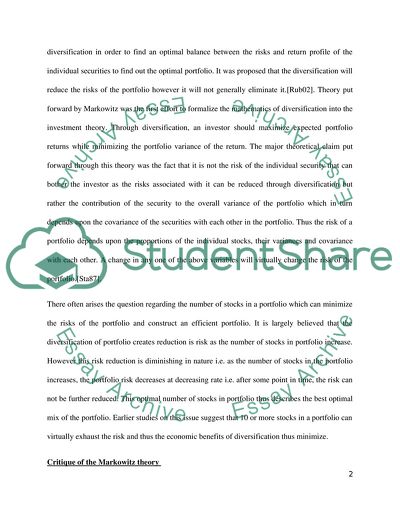Cite this document
(How Does a Rational Investor Build the Optimal Portfolio Term Paper - 1, n.d.)
How Does a Rational Investor Build the Optimal Portfolio Term Paper - 1. Retrieved from https://studentshare.org/finance-accounting/1712724-how-does-a-rational-investor-build-the-optimal-portfolio-should-international-securities-be-added-to-that
How Does a Rational Investor Build the Optimal Portfolio Term Paper - 1. Retrieved from https://studentshare.org/finance-accounting/1712724-how-does-a-rational-investor-build-the-optimal-portfolio-should-international-securities-be-added-to-that
(How Does a Rational Investor Build the Optimal Portfolio Term Paper - 1)
How Does a Rational Investor Build the Optimal Portfolio Term Paper - 1. https://studentshare.org/finance-accounting/1712724-how-does-a-rational-investor-build-the-optimal-portfolio-should-international-securities-be-added-to-that.
How Does a Rational Investor Build the Optimal Portfolio Term Paper - 1. https://studentshare.org/finance-accounting/1712724-how-does-a-rational-investor-build-the-optimal-portfolio-should-international-securities-be-added-to-that.
“How Does a Rational Investor Build the Optimal Portfolio Term Paper - 1”. https://studentshare.org/finance-accounting/1712724-how-does-a-rational-investor-build-the-optimal-portfolio-should-international-securities-be-added-to-that.


